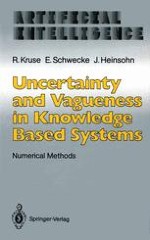1991 | Buch
Uncertainty and Vagueness in Knowledge Based Systems
Numerical Methods
verfasst von: Rudolf Kruse, Erhard Schwecke, Jochen Heinsohn
Verlag: Springer Berlin Heidelberg
Buchreihe : Artificial Intelligence
Enthalten in: Professional Book Archive
